Exploring the natural wonders of Meteora from 4,000 feet
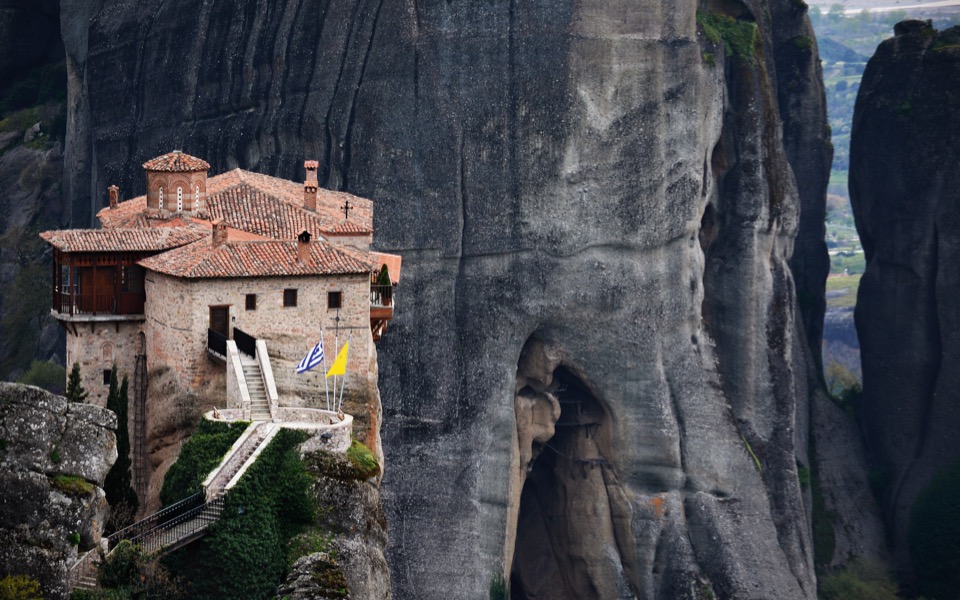
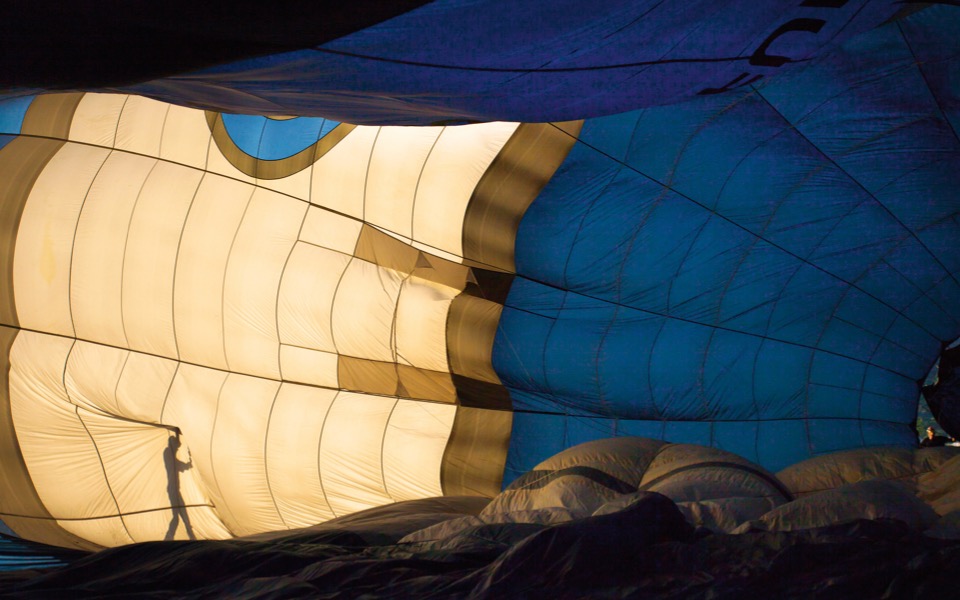
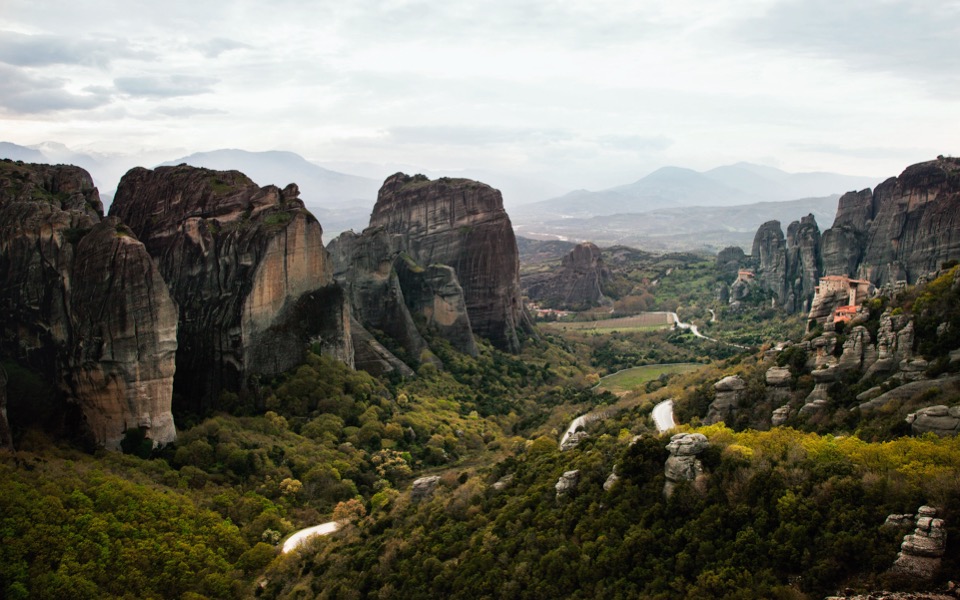
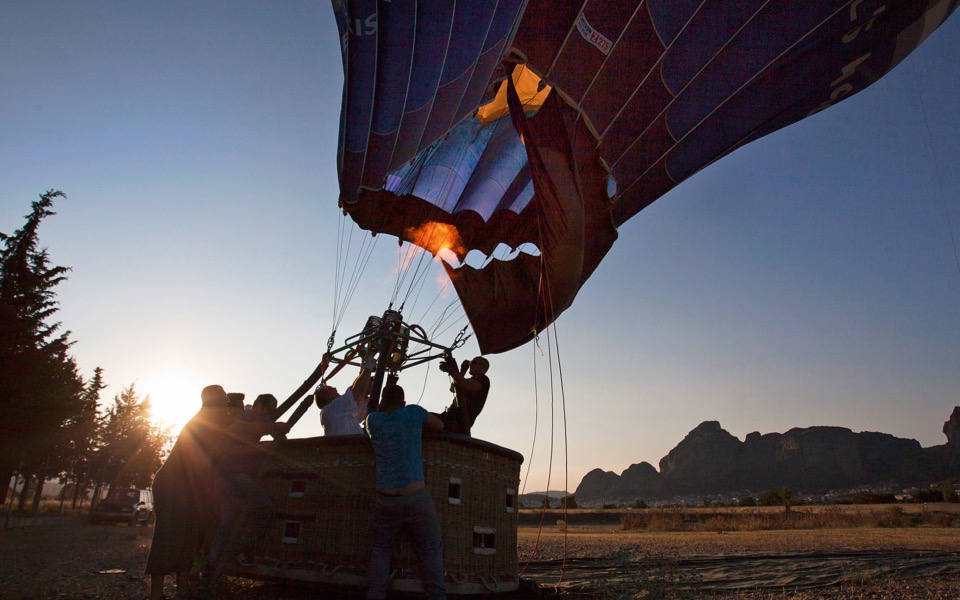
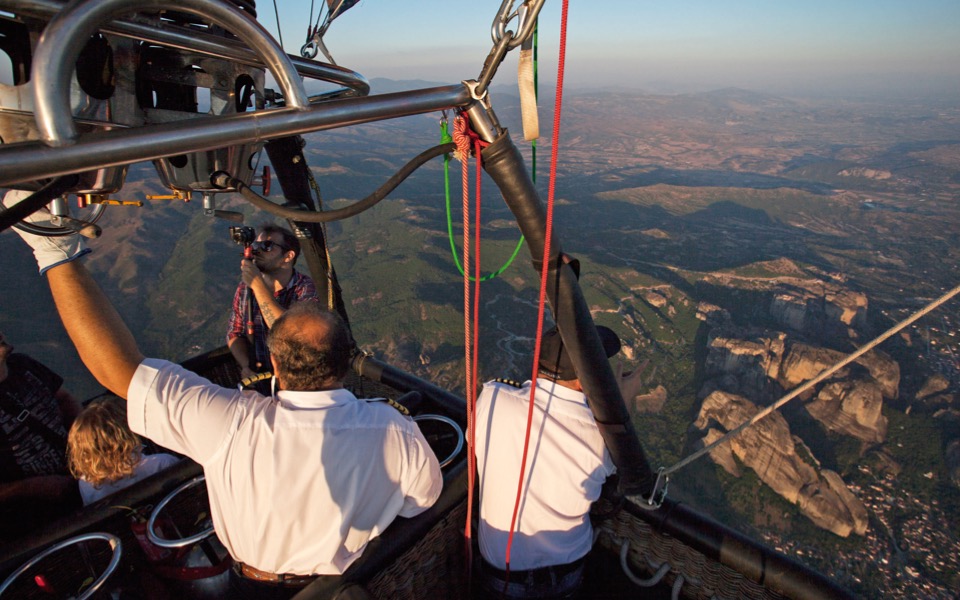
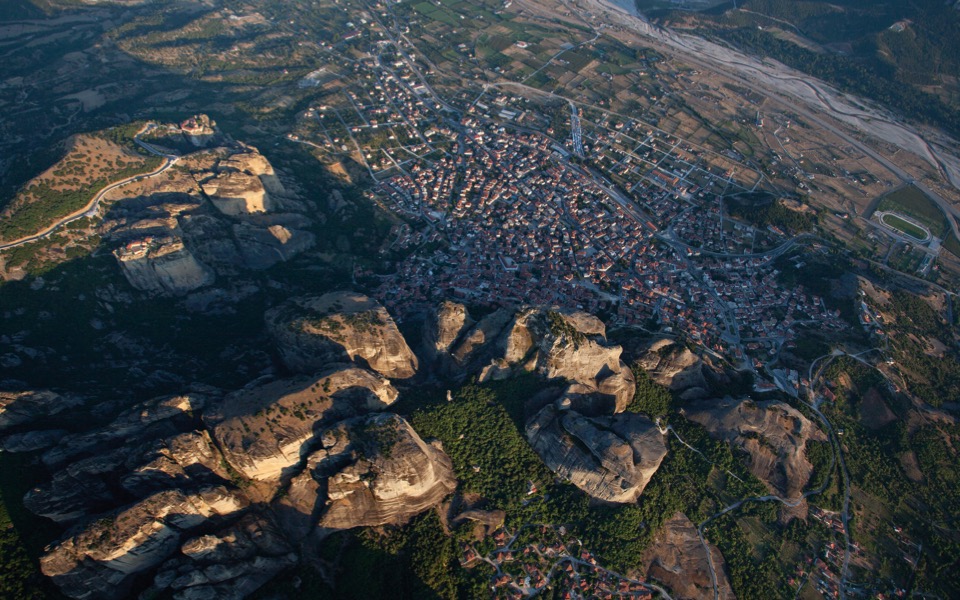
For many of us, a ride in a hot-air balloon is a childhood dream. Every so often, though, dreams can come true.
I am at a remote spot northwest of the town of Kalambaka in central Greece. The first thing I learn is that the launch site is determined by the direction of the wind on any given day.
Looking to the north and east, I am awed by the massive rock pinnacles of Meteora, standing proudly for millennia between the mountains of Koziakas and Antihasia. The staff at Meteora Tours, the first in the area to start offering hot-air balloon rides around the area, unfurl the envelope that grows into a balloon as it is filled with hot air and the pilot fires up the burner. The lift-off is so smooth, I’m up in the air before I know it.
Just like Kostas Hatzis says in the popular Greek song “Ap’ to Aeroplano” (From the Airplane): “When you look from up high, the world looks like a painting… houses like matchboxes.”
But what is more than apparent as the stunning landscapes unfold below us is that nature is by far the most skilled architect and artist.
On our left, looking at the Pindus range in the distance, I discern a glint of the Pineios River and, in front of it, its greatest achievement, one that took millennia to complete: the imposing rock formations of Meteora, a UNESCO World Heritage site.
This spectacular site of more than 800 pinnacles is not just a monument of nature but also one of the most important sites of the Orthodox faith.
From AD 1100 or so, when the first ascetics scrambled up the rocks, Meteora has been second only to Mount Athos in northern Greece in terms of the size of its monastic community and also as a pilgrimage site. The community once consisted of 30 monasteries, of which only six are still functioning today.
I have visited Meteora on several occasions in the past but I must say that nothing compares to the views I enjoyed from the hot-air balloon.
We floated north on a gentle breeze, slowly leaving behind the Thessaly Plain and the stone giants, lit up by the last rays of the afternoon sun. The clean air at 4,000 feet, the green forest that unfolded below us and the stunning red tones of the setting sun brought me complete tranquillity.
The hour of the tour flies by and we start to descend as the sun disappears behind Pindus.
When we reach the ground, a group of farmers working in their fields start waving and cheering at our arrival, running to the landing point to welcome us: such a truly beautiful experience, with scenes that seem straight out of a fairy tale.
Useful information
The balloon rides organized by Meteora Tours last between an hour and 90 minutes, and take place all year round (weather permitting) from sunrise to sunset. Prices start at 180 euros for adults and 100 euros for children, and include transportation to and from your hotel, breakfast and a post-flight glass of champagne. The maximum number of passengers is set at 12 and the minimum required to conduct a flight at six. Private, two-person tours cost 525 euros.
To learn more about the tours offered or to book a balloon ride, visit www.meteoraflights.com.
This article first appeared in Kathimerini’s Sunday supplement, K.





